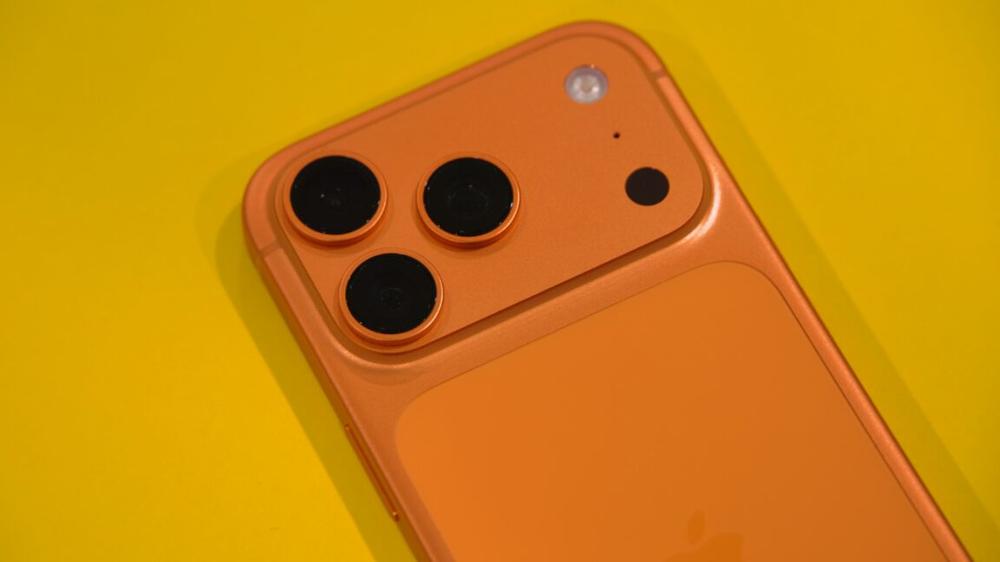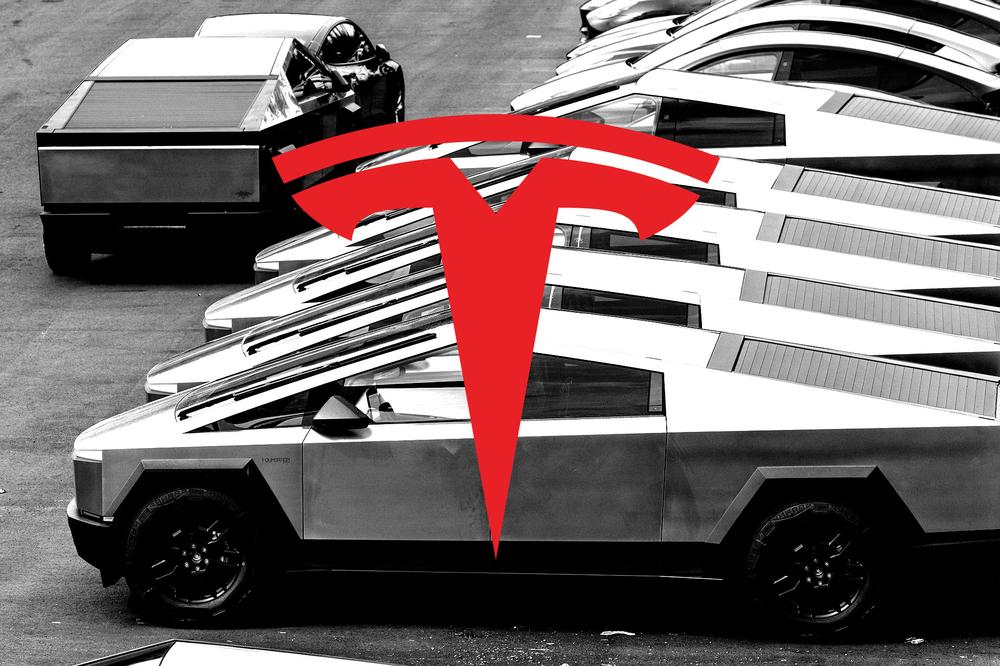Apple iPhone 17 Pro review: Come for the camera, stay for the battery
If your iPhone is your main or only camera, the iPhone 17 Pro is for you.
Andrew Cunningham – Oct 3, 2025 11:04 am | Story text Size Width * Links * Subscribers onlyLearn more
Apple's "Pro" iPhones usually look and feel a lot like the regular ones, just with some added features stacked on top. They've historically had better screens and more flexible cameras, and there has always been a Max option for people who really wanted to blur the lines between a big phone and a small tablet (Apple's commitment to the cheaper "iPhone Plus" idea has been less steadfast). But the qualitative experience of holding and using one wasn't all that different compared to the basic aluminum iPhone.
This year's iPhone 17 Pro looks and feels like more of a departure from the basic iPhone, thanks to a new design that prioritizes function over form. It's as though Apple anticipated the main complaints about the iPhone Air—why would I want a phone with worse battery and fewer cameras, why don't they just make the phone thicker so they can fit in more things—and made a version of the iPhone that they could point to and say, "We already make that phone—it's that one over there."
Because the regular iPhone 17 is so good, and because it uses the same 6.3-inch OLED ProMotion screen, I think the iPhone 17 Pro is playing to a narrower audience than usual this year. But Apple's changes and additions are also tailor-made to serve that audience. In other words, fewer people even need to consider the iPhone Pro this time around, but there's a lot to like here for actual "pros" and people who demand a lot from their phones.
Design
The iPhone 17 drops the titanium frame of the iPhone 15 and 16 Pro in favor of a return to aluminum. But it's no longer the aluminum-framed glass-sandwich design that the iPhone 17 still uses; it's a reformulated "aluminum unibody" design that also protects a substantial portion of the phone's back. It's the most metal we've seen on the back of the iPhone since 2016's iPhone 7.
But remember that part of the reason the 2017 iPhone 8 and iPhone X switched to the glass sandwich design was wireless charging. The aluminum iPhones always featured some kind of cutouts or gaps in the aluminum to allow Wi-Fi, Bluetooth, and cellular signals through. But the addition of wireless charging to the iPhone meant that a substantial portion of the phone's back now needed to be permeable by wireless signals, and the solution to that problem was simply to embrace it with a full sheet of glass.
The iPhone 17 Pro returns to the cutout approach, and while it might be functional, it leaves me pretty cold, aesthetically. Small stripes on the sides of the phone and running all the way around the "camera plateau" provide gaps between the metal parts so that you can't mess with your cellular reception by holding the phone wrong; on US versions of the phone with support for mmWave 5G, there's another long ovular cutout on the top of the phone to allow those signals to pass through.
But the largest and most obvious is the sheet of glass on the back that Apple needed to add to make wireless charging work. The aluminum, the cell signal cutouts, and this sheet of glass are all different shades of the phone's base color (it's least noticeable on the Deep Blue phone and most noticeable on the orange one).
The result is something that looks sort of unfinished and prototype-y. There are definitely people who will like or even prefer this aesthetic, which makes it clearer that this piece of technology is a piece of technology rather than trying to hide it—the enduring popularity of clear plastic electronics is a testament to this. But it does feel like a collection of design decisions that Apple was forced into by physics rather than choices it wanted to make.
That also extends to the camera plateau area, a reimagining of the old iPhone camera bump that extends all the way across the top of the phone. It's a bit less slick-looking than the one on the iPhone Air because of the multiple lenses. And because the camera bumps are still additional protrusions on top of the plateau, the phone wobbles when it's resting flat on a table instead of resting on the plateau in a way that stabilizes the phone.
Finally, there's the weight of the phone, which isn't breaking records but is a step back from a substantial weight reduction that Apple was using as a first-sentence-of-the-press-release selling point just two years ago. The iPhone 17 Pro weighs the same amount as the iPhone 14 Pro, and it has a noticeable heft to it that the iPhone Air (say) does not have. You'll definitely notice if (like me) your current phone is an iPhone 15 Pro.
Apple sent me one of its $59 "TechWoven" cases with the iPhone 17 Pro, and it solved a lot of what I didn't like about the design—the inconsistent materials and colors everywhere, and the bump-on-a-bump camera. There's still a bump on the top, but at least the aperture of a case evens it out so that your phone isn't tilted by the plateau and wobbling because of the bump.
The original FineWoven cases were (rightly) panned for how quickly and easily they scratched, but the TechWoven case might be my favorite Apple-designed phone case of the ones I've used. It doesn't have the weird soft lint-magnet feel of some of the silicone cases, FineWoven's worst problems seem solved, and the texture on the sides of the case provides a reassuring grippiness. My main issue is that the opening for the USB-C port on the bottom is relatively narrow. Apple's cables will fit fine, but I had a few older or thicker USB-C connectors that didn't.
This isn't a case review, but I bring it up mainly to say that I stand by my initial assessment of the Pro's function-over-form design: I am happy I put it in a case, and I think you will be, too, whichever case you choose (when buying for myself or family members, I have defaulted to Smartish cases for years, but your mileage may vary).
On “Scratchgate”
Early reports from Apple's retail stores indicated that the iPhone 17 Pro's design was more susceptible to scratches than past iPhones and that some seemed to be showing marks from as simple and routine an activity as connecting and disconnecting a MagSafe charging pad.
Apple says the marks left by its in-store MagSafe chargers weren't permanent scratches and could be cleaned off. But independent testing from the likes of iFixit has found that the anodization process Apple uses to add color to the iPhone's aluminum frame is more susceptible to scratching and flaking on non-flat surfaces like the edges of the camera bump.
Like "antennagate" and "bendgate" before it, many factors will determine whether "scratchgate" is actually something you'll notice. Independent testing shows there is something to the complaints, but it doesn't show how often this kind of damage will appear in actual day-to-day use over the course of months or years. Do keep it in mind when deciding which iPhone and accessories you want—it's just one more reason to keep the iPhone 17 Pro in a case, if you ask me—but I wouldn't say it should keep you from buying this phone if you like everything else about it.
Camera
I have front-loaded my complaints about the iPhone 17 Pro to get them out of the way, but the fun thing about an iPhone in which function follows form is that you get a lot of function.
When I made the jump from the regular iPhone to the Pro (I went from an 11 to a 13 Pro and then to a 15 Pro), I did it mainly for the telephoto lens in the camera. For both kid photos and casual product photography, it was game-changing to be able to access the functional equivalent of optical zoom on my phone.
The iPhone 16 Pro changed the telephoto lens' zoom level from 3x to 5x, which was useful if you want maximum zoom but which did leave a gap between it and the Fusion Camera-enabled 2x mode. The 17 Pro switches to a 4x zoom by default, closing that gap, and it further maximizes the zooming capabilities by switching to a 48 MP sensor.
Like the main and ultrawide cameras, which had already switched to 48 MP sensors in previous models, the telephoto camera saves 24 MP images when shooting in 4x mode. But it can also crop a 12 MP image out of the center of that sensor to provide a native-resolution 12 MP image at an 8x zoom level, albeit without the image quality improvements from the "pixel binning" process that 4x images get.
You can debate how accurate it is to market this as "optical-quality zoom" as Apple does, but it's hard to argue with the results. The level of detail you can capture from a distance in 8x mode is consistently impressive, and Apple's hardware and software image stabilization help keep these details reasonably free of the shake and blur you might see if you were shooting at this zoom level with an actual hardware lens.
It's my favorite feature of the iPhone 17 Pro, and it's the thing about the phone that comes closest to being worth the $300 premium over the regular iPhone 17.
Apple continues to gate several other camera-related features to the Pro iPhones. All phones can shoot RAW photos in third-party camera apps that support it, but only the Pro iPhones can shoot Apple's ProRAW format in the first-party camera app (ProRAW performs Apple's typical image processing for RAW images but retains all the extra information needed for more flexible post-processing).
I don't spend as much time shooting video on my phone as I do photos, but for the content creator and influencer set (and the "we used phones and also professional lighting and sound equipment to shoot this movie" set) Apple still reserves several video features for the Pro iPhones. That list includes 120 fps 4K Dolby Vision video recording and a four-mic array (both also supported by the iPhone 16 Pro), plus ProRes RAW recording and Genlock support for synchronizing video from multiple sources (both new to the 17 Pro).
The iPhone Pro also remains the only iPhone to support 10 Gbps USB transfer speeds over the USB-C port, making it faster to transfer large video files from the phone to an external drive or a PC or Mac for additional processing and editing. It's likely that Apple built this capability into the A19 Pro's USB controller, but both the iPhone Air and the regular iPhone 17 are restricted to the same old 25-year-old 480 Mbps USB 2.0 data transfer speeds.
The iPhone 17 Pro gets the same front camera treatment as the iPhone 17 and the Air: a new square "Center Stage" sensor that crops a 24 MP square image into an 18 MP image, allowing users to capture approximately the same aspect ratios and fields-of-view with the front camera regardless of whether they're holding the phone in portrait or landscape mode. It's definitely an image-quality improvement, but it's the same as what you get with the other new iPhones.
Specs, speeds, and battery
The iPhone 17 Pro uses, by a slim margin, the fastest and most capable version of the A19 Pro chip, partly because it has all of the A19 Pro's features fully enabled and partly because its thermal management is better than the iPhone Air's.
The A19 Pro in the iPhone 17 Pro uses two high-performance CPU cores and four smaller high-efficiency CPU cores, plus a fully enabled six-core GPU. Like the iPhone Air, the iPhone Pro also includes 12GB of RAM, up from 8GB in the iPhone 16 Pro and the regular iPhone 17. Apple has added a vapor chamber to the iPhone 17 Pro to help keep it cool rather than relying on metal to conduct heat away from the chips—an infinitesimal amount of water inside a small metal pocket continually boils, evaporates, and condenses inside the closed copper-lined chamber. This spreads the heat evenly over a large area, compared to just using metal to conduct the heat; having the heat spread out over a larger area then allows that heat to be dissipated more quickly.
We saw in our iPhone 17 review how that phone's superior thermals helped it outrun the iPhone Air's version of the A19 Pro in many of our graphics tests; the iPhone Pro's A19 Pro beats both by a decent margin, thanks to both thermals and the extra hardware.
The performance line graph that 3DMark generates when you run its benchmarks actually gives us a pretty clear look at the difference between how the iPhones act. The graphs for the iPhone 15 Pro, the iPhone 17, and the iPhone 17 Pro all look pretty similar, suggesting that they're cooled well enough to let the benchmark run for a couple of minutes without significant throttling. The iPhone Air follows a similar performance curve for the first half of the test or so but then drops noticeably lower for the second half—the ups and downs of the line actually look pretty similar to the other phones, but the performance is just a bit lower because the A19 Pro in the iPhone Air is already slowing down to keep itself cool.
The CPU performance of the iPhone 17 Pro is also marginally better than this year's other phones, but not by enough that it will be user-noticeable.
As for battery, Apple's own product pages say it lasts for about 10 percent longer than the regular iPhone 17 and between 22 and 36 percent longer than the iPhone Air, depending on what you're doing.
I found the iPhone Air's battery life to be tolerable with a little bit of babying and well-timed use of the Low Power Mode feature, and the iPhone 17's battery was good enough that I didn't worry about making it through an 18-hour day. But the iPhone 17 Pro's battery really is a noticeable step up.
One day, I forgot to plug it in overnight and awoke to a phone that still had a 30 percent charge, enough that I could make it through the morning school drop-off routine and plug it in when I got back home. Not only did I not have to think about the iPhone 17 Pro's battery, but it's good enough that even a battery with 85-ish percent capacity (where most of my iPhone batteries end up after two years of regular use) should still feel pretty comfortable. After the telephoto camera lens, it's definitely the second-best thing about the iPhone 17 Pro, and the Pro Max should last for even longer.
Pros only
I'm taken with a lot of things about the iPhone 17 Pro, but the conclusion of our iPhone 17 review still holds: If you're not tempted by the lightness of the iPhone Air, then the iPhone 17 is the one most people should get.
Even more than most Pro iPhones, the iPhone 17 Pro and Pro Max will make the most sense for people who actually use their phones professionally, whether that's for product or event photography, content creation, or some other camera-centric field where extra flexibility and added shooting modes can make a real difference. The same goes for people who want a bigger screen, since there's no iPhone 17 Plus.
Sure, the 17 Pro also performs a little better than the regular 17, and the battery lasts longer. But the screen was always the most immediately noticeable upgrade for regular people, and the exact same display panel is now available in a phone that costs $300 less.
The benefit of the iPhone Pro becoming a bit more niche is that it's easier to describe who each of these iPhones is for. The Air is the most pleasant to hold and use, and it's the one you'll probably buy if you want people to ask you, "Oh, is that one of the new iPhones?" The Pro is for people whose phones are their most important camera (or for people who want the biggest phone they can get). And the iPhone 17 is for people who just want a good phone but don't want to think about it all that much.
The good
- Excellent performance and great battery life
- It has the most flexible camera in any iPhone, and the telephoto lens in particular is a noticeable step up from a 2-year-old iPhone 15 Pro
- 12GB of RAM provides extra future-proofing compared to the standard iPhone
- Not counting the old iPhone 16, it's Apple's only iPhone to be available in two screen sizes
- Extra photography and video features for people who use those features in their everyday lives or even professionally
The bad
- Clunky, unfinished-looking design
- More limited color options compared to the regular iPhone
- Expensive
- Landscape layouts for apps only work on the Max model
The ugly
- Increased weight compared to previous models, which actually used their lighter weight as a selling point

 Tesla Cybertruck’s faulty door handles caused woman’s death, lawsuit alleges
Tesla Cybertruck’s faulty door handles caused woman’s death, lawsuit alleges